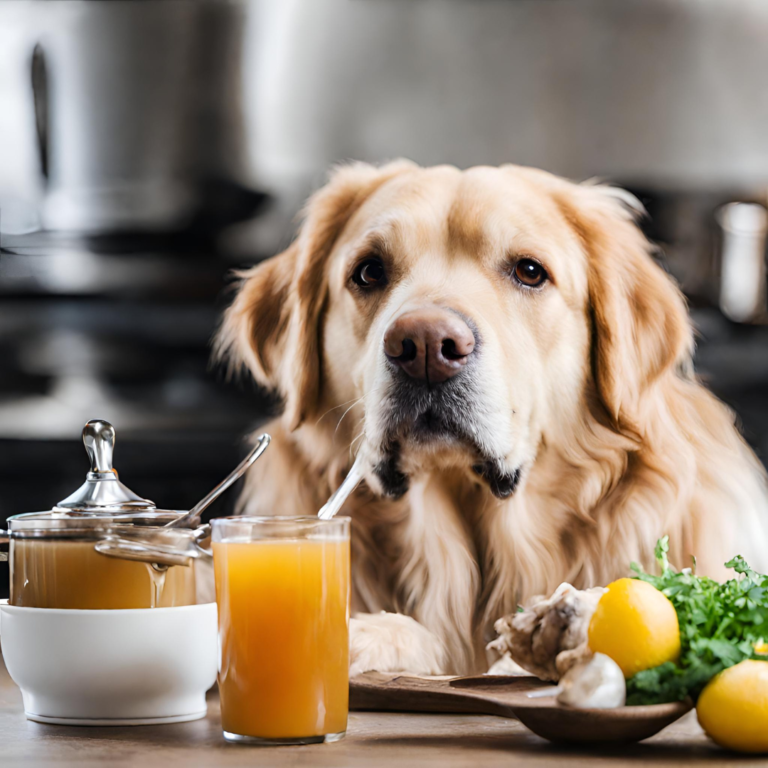Bone broth has gained popularity among dog owners as a nutritious and tasty addition to their pets’ diets. It is packed with essential nutrients and minerals that can benefit dogs’ overall health and well-being. In this article, we will guide you through the process of making bone broth for dogs, providing step-by-step instructions, and discussing its numerous benefits. So, whether you want to improve your dog’s digestion, support their joint health, or simply treat them to a delicious and nutritious meal, read on to learn how to make bone broth for dogs.
Contents
Benefits of Bone Broth for Dogs
Before we dive into the process of making bone broth, let’s explore the benefits it offers to our canine companions.
- Joint Health: Bone broth is rich in glucosamine and chondroitin, which are beneficial for maintaining healthy joints. These compounds help reduce inflammation, improve joint mobility, and can be especially helpful for senior dogs or those with arthritis or joint issues.
- Digestive Health: Bone broth contains gelatin, collagen, and amino acids that can help soothe and heal the digestive tract. It can be particularly beneficial for dogs with sensitive stomachs or digestive issues such as diarrhea or constipation.
- Immune System Support: The amino acids in bone broth, such as glycine and proline, support a healthy immune system by promoting the production of antibodies and reducing inflammation. This can help your dog fight off infections and boost their overall immune response.
- Hydration: Bone broth is an excellent way to provide additional hydration to your dog, especially if they are reluctant to drink water or during hot summer months. The flavorful broth can entice them to drink more and prevent dehydration.
Now that we understand the benefits of bone broth, let’s move on to the step-by-step process of making it for your furry friend.
Step 1: Gather the Ingredients
To make bone broth, you will need the following ingredients:
- High-quality bones: Use raw, uncooked bones from poultry, beef, or fish. Organic and grass-fed bones are preferable, as they are free from hormones and other harmful additives.
- Water: Use enough water to cover the bones fully. Filtered water is recommended to ensure there are no impurities.
- Apple cider vinegar: One to two tablespoons of raw, unfiltered apple cider vinegar will help draw out the nutrients from the bones.
Optional ingredients for added flavor and nutrients:
- Vegetables: Carrots, celery, and parsley can be added to enhance the flavor and add nutritional value to the broth. Make sure to wash and chop them into small pieces.
- Turmeric: This anti-inflammatory spice can be added to provide additional health benefits. Use a small pinch for every few cups of broth.
Step 2: Preparing the Bones
Before cooking the bones, it’s essential to prepare them properly. If using poultry bones, it’s best to roast them in the oven for around 30 minutes at 350°F (175°C). Roasting the bones adds flavor and helps remove excess fat.
For larger bones, such as beef or fish, it’s advisable to skip the oven-roasting step and move directly to the next step.
Step 3: Cooking the Bone Broth
- Place the bones in a large stockpot or slow cooker and cover them with water. Add the apple cider vinegar, which will help extract the minerals from the bones.
- If using vegetables, add them to the pot along with turmeric (optional).
- Bring the mixture to a boil, then reduce the heat to low and let it simmer. If using a stockpot, simmer for at least 8-12 hours, while a slow cooker may require 24-48 hours for optimal nutrient extraction.
- Skim off any foam or impurities that rise to the surface during the cooking process.
Note: It’s essential to monitor the broth during cooking. Ensure that the water level doesn’t drop too low, and if necessary, add more water to keep the bones covered.
Step 4: Straining and Storing the Bone Broth
- Once the cooking time has passed, remove the bones and vegetables from the broth using a strainer or slotted spoon. Discard the bones and vegetables, as they have released their nutrients into the broth.
- Allow the broth to cool and skim off any additional fat that solidifies on the surface. Removing excess fat helps prevent gastrointestinal upset in some dogs.
- Store the bone broth in airtight containers, such as glass jars or freezer-safe containers. It can be refrigerated for up to five days or frozen for long-term storage. If freezing, leave some space at the top of the container to allow for expansion.
Step 5: Serving the Bone Broth to Your Dog
- Before serving the bone broth to your dog, it’s important to ensure that it has cooled to room temperature.
- Adjust the serving size based on your dog’s weight and the purpose of incorporating bone broth into their diet. As a general rule, dogs can have around 1/4 to 1/2 cup of bone broth per 10 pounds of body weight per day. However, consult with your veterinarian to determine the appropriate amount for your specific dog.
- Bone broth can be served as a stand-alone treat, poured over their regular kibble, or used to rehydrate freeze-dried or dehydrated dog food.
- Monitor your dog’s response to the bone broth and check if they are enjoying it and experiencing any health benefits. It’s always best to introduce new foods gradually to avoid possible digestive upset.
Conclusion
Making bone broth for your dog is a simple and rewarding process that can provide numerous health benefits. From supporting joint health and digestion to boosting the immune system and providing hydration, bone broth is a nutritious addition to your dog’s diet. Remember to use high-quality bones, cook the broth for an appropriate amount of time, and serve it in moderate amounts based on your dog’s weight and needs. With the benefits of bone broth, your furry friend will enjoy a tasty and healthy treat that improves their overall well-being.


